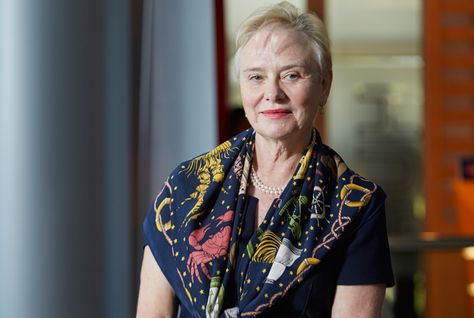
19 Dec When technology meets diversity: MasterCard’s International President Ann Cairns
Not many industries have remained unchanged over the last decade. Technology has affected just about everything we do, in just about every industry we work in. Is that true for MasterCard?
We’ve been around for 50 years now – in fact, we’ve been here in the Middle East for 30 of those years – and we’re going through massive change because everything is becoming digital. Our network has been digital for years, but until now a little plastic card has represented the front-end of our services. But that’s now moving to things like smartphones and tablets, even apps.
That’s the disruptive thing that is happening in our industry, but it’s going to go even further than that. In the next ten years there will be more than 50 billion devices connected to the internet, and machines will actually be talking to other machines. Things like payments are going to be embedded in your fridge or in your car, for auto transactions that make life simpler. Automatically ordering food when you’re out of a certain product, for example, or paying the moment you drive into a free space in a car park.
Contact-less payments seemed to be all the rage, however they seem to have taken a while to get going in this region. Would you agree?
I wouldn’t say the region is behind. Contact-less payments are now available in 70 countries around the world. America only has about 2 percent conctact-less payment points, and this region has more than that. This region isn’t at the forefront – the biggest country at the moment is Australia with seven out of ten payments being contact-less – but it’s not lagging behind.
If you go to somewhere like the UK, you can use public transport by swiping your phone or your card. That’s when a tipping point occurs. If you have an open-loop system – where you can use any ordinary credit or debit card for payments – on something like public transport, that’s when it really takes off.
There are many apps that make this sort of automated payment incredibly simple, including the likes of Uber and Deliveroo. Those must drive quite a lot of business.
They are. When we first saw Uber happening we thought it was fantastic. Everything happening online with regards to the share economy and micro-transactions, that’s a huge driver of business for us.
Is there much back-and-forth between you and these applications?
We’re there, spotting trends in technology and backing the winners, but we’re also working with the big companies like Google and Facebook. Of course, we’re also working with Samsung and Apple, with regards to the technology actually inside their devices.
At the moment we’re working with Softbank to create little helper robot that can actually take orders in restaurants, for example. The idea behind these partnerships is to transform the entire consumer experience into something easy and interesting. We’re actually quite a large technology company.
When you think Mastercard, you don’t necessarily think technology industry.
At our initial public offering ten years ago, the company was valued at about US$5 billion. Today, we’re worth over US$100 billion. We outperform many companies in the technology space.
One of the characteristics of successful technology companies is that they are obsessed with innovating. Where does that creativity come from within Mastercard? Most people would assume your industry comes down to a few spreadsheets.
We get a lot of innovation through diversity. If you look at the people around the world who work for us, there’s about twelve thousand of us. Our company looks more like that of Facebook, than a traditional bank. If you travel around the world and look at who is actually working for us, you’ll see we recruit a lot of local people – the head of our China division is from Shanghai – and we tend to have country managers from their own country.
We also like to move people around the world, to promote amazingly diverse mix of people. Our workforce is also 40 percent women, by the way, and some of those women are running very large regions. We also recruit from very different industries. Yes, we employ people from banking who understand risk and credit and so on, but we also have people from tech and entrepreneurial backgrounds.
This region is a little behind when it comes to closing the gap in gender diversity, especially in leadership positions. What are some ways local companies can quickly correct this issue?
I’ve taken some positive action myself, even though we have good gender diversity in our company. The reason is because I wanted more women in senior jobs. So I asked that in every senior business position and above, that there was at least one qualified woman on the candidate’s list.
I didn’t demand a woman get the job, I just asked for a qualified candidate to have an opportunity. After we started that policy, we saw a ten percent increase in women recruited to open positions. Just by asking the question, we improved our gender diversity. And in a way that was both fair and balanced.


Sorry, the comment form is closed at this time.